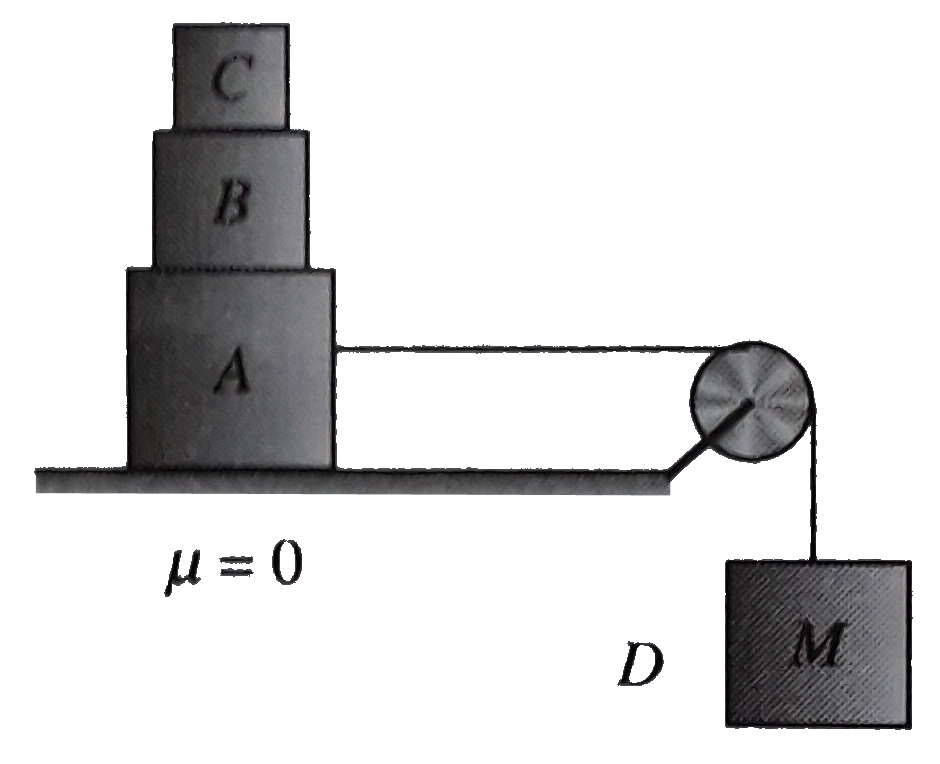A
B
C
D
Text Solution
Verified by Experts
The correct Answer is:
|
Topper's Solved these Questions
NEWTON'S LAWS OF MOTION 2
CENGAGE PHYSICS ENGLISH|Exercise Multiple Correct|2 VideosView PlaylistNEWTON'S LAWS OF MOTION 2
CENGAGE PHYSICS ENGLISH|Exercise Linked Comprehension|52 VideosView PlaylistNEWTON'S LAWS OF MOTION 2
CENGAGE PHYSICS ENGLISH|Exercise Subjective|21 VideosView PlaylistNEWTON'S LAWS OF MOTION 1
CENGAGE PHYSICS ENGLISH|Exercise Integer|5 VideosView PlaylistPROPERTIES OF SOLIDS AND FLUIDS
CENGAGE PHYSICS ENGLISH|Exercise INTEGER_TYPE|2 VideosView Playlist
Similar Questions
Explore conceptually related problems
CENGAGE PHYSICS ENGLISH-NEWTON'S LAWS OF MOTION 2-Single Correct
- In Fig the block are at rest a force of 10 N act on the block of 4 kg ...
04:53
|
Play - The masses of the block A and B are m and M Between A and B there is a...
03:43
|
Play - There block A B ,and C of equal mass m are placed one over the other o...
04:41
|
Playing Now - Two blocks of masses of 0.2 kg and 0.5 kg which are placed 22m apart o...
06:47
|
Play - A chain of length L is placed on a horizontal surface as shown in figu...
03:40
|
Play - A vehicle in moving with a velocity v on a carved total of width b and...
05:43
|
Play - A circular road of radius 1000m has hanging angle 45^(@) The maximum s...
03:48
|
Play - A circular table of radius 0.5 m has a smooth diametrical groove. A h...
05:34
|
Play - A disc of radius R rotates from rest about a vertical axis with a cons...
05:02
|
Play - A house is built on the top of a hill with 45^(@)slope Due to the slid...
04:03
|
Play - A block of mass 4 kg is pressed againest the wall by a force of 80N as...
01:58
|
Play - For the situation shown in Fig the block is sationary w.r.t.inclined f...
04:11
|
Play - If the coefficient of friction between all surface figure is 0.4 then...
05:45
|
Play - Find the least horizontal force P to start motion of any part of the s...
02:32
|
Play - A block of mass m is attached with a massless spring of force constant...
04:21
|
Play - In the system shown in Fig the friction coefficient between ground and...
03:23
|
Play - Two block A of 6 kg and B of 4 kg are placed in contact with each othe...
06:42
|
Play - Two blocks of masses 3 kg and 2 kg are placed side by side on an incli...
05:54
|
Play - Determine the time in which the smaller block reaches other end of big...
03:51
|
Play - A uniform chain is placed at rest on a rough surface of base length l ...
04:26
|
Play
